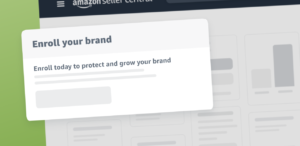
Unlocking Amazon Success: Mastering Total ACOS Optimization
Introduction: In the dynamic realm of Amazon advertising, success hinges on mastering key metrics, and
Pay-per-click (PPC) is a digital marketing model where advertisers pay a certain fee every time someone clicks one of their ads. It’s a cost-effective way to boost site traffic, attract leads, and generate revenue. This post will help you to understand ppc management costs.
So just how much does PPC management cost? The answer is never an exact amount. Apart from understanding how Google Ads works, it’s also essential to learn about other factors that affect costs and the fees when hiring a PPC agency. PPC management is very important to understand.
On average, small and mid-sized enterprises (SMEs) spend about $9,000 — $10,000 monthly on PPC campaigns, and the average PPC return on investment is $2 for every $1 ad spend. PPC campaigns can lead to site traffic, leading to high conversion rates, which can lead to more sales. Effective campaigns have the potential to surpass the average return rate exponentially.
The right agency and pricing plan can help businesses achieve the next online presence and revenue level.
For this cost guide, let’s discuss advertising with the tech giant, Google. It’s not the only available search engine, but it accounts for almost 87% of the global search industry and 246 million unique users in the United States.
For us to understand the actual cost of a PPC campaign, we first have to know how Google Ads works.
If someone uses Google to look for something online, and one or more advertisers are bidding for keywords relevant to the search, Google prompts an auction. Google will then compute for the bidding advertisers’ Ad Rank, which determines where an ad will be placed in the paid results section, or if it will be in it at all.
Your Ad Rank = Cost Per Click (CPC) Bid You Specify for Keywords X Quality Score
The higher the ad rank, the higher the position of an ad is in the paid section. The company only pays Google every time someone clicks on its ads, and this is how much a company spends per click:
Your Maximum CPC = (The Ad Rank of Advertiser Below You / Your Quality Score) + $0.01
The quality score is a multi-faceted aspect in advertising with Google. It considers an ad’s relevance to its keywords and how it adds value to the user’s search experience. This scoring system allows advertisers with a small budget to advertise just as effectively as high-budget companies, as long as they have high-quality scores. Follow all the steps to better understand ppc managemnt costs.
Let’s learn more about Google’s elements that affect PPC costs, the biggest of which is the industry a company is in.
The Company’s Industry
One of Google’s revenue streams is the keywords used in ads in the paid section on a search. The costs of these keywords are, in part, determined by how much Google visitors search for them. Here are the top 10 most expensive keywords, according to Reach:
Based on this list, you can see how costly running a PPC campaign for a criminal lawyer can be. The words bail bonds and lawyers are the top four most expensive keywords, with an average cost of $58.48 and $54.86, respectively.
While the average costs for search and display are only $2.69 and $0.63, respectively, some industries have far more expensive keywords. Running PPC campaigns for travel, nutrition, and pet care companies would be less costly than those in law or insurance.
One of the benefits of using Google Ads is that companies can set campaign budgets independently. Each campaign has extensive control parameters that businesses can manage to meet their specific daily requirements. For example, they can choose to target 100 clicks at $0.65 per click, which sets the daily budget at $65. If companies set their maximum budget at $0.65 per click, they won’t have to pay for more than that.
Companies may indicate in a campaign when they want to display their ads. This feature is helpful for businesses that don’t operate 24 hours a day, such as restaurants.
For example, a restaurant that operates from 12 PM until 9 PM may opt to run its ads from 12 PM to 6 PM. It may customize this time frame based on its daily preferences, and it may also choose a duration when it wants increased visibility.
Geotargeting allows businesses to target specific geographical areas, with an option to choose an area as big as a state or one as small as a neighborhood. This technique is ideal for brands with physical locations, such as hotels, dining establishments, and grocery stores.
Geotargeting allows a grocery owner to advertise its products and services to a broader market than a four-block radius from its location.
Device Targeting
It’s 2020, and we are not limited to searching via desktop computers anymore. Today, Google allows advertisers to target their clients based on the devices they are using. Companies are allowed to specify how to split their budget between computers, mobile phones, and tablets, or a combination of any of those three choices.
If a company knows where its target audience spends most of their time online, it can customize its campaign to better fit their clients’ preferences.
It is essential to be aware of targeting options to maximize the PPC budget.
Hiring An Agency For PPC
Now that we’ve discussed how Google Ads works and the Google elements that affect PPC management cost, it’s time to discuss the costs that come with hiring an agency for PPC.
Before starting a PPC campaign, a company has to study its target market and clearly define its objectives. Once a business has determined whether it wants to boost leads, sales, or brand awareness, it can choose a pricing model for its campaign. If you feel any difficulty related to ppc management costs just follow this article.
Choosing the right pricing model for a company can help it manage its costs while running PPC ads.
Some agencies will charge clients by the hour on a monthly or quarterly basis. The significant part about this pricing model is that it’s easy to track, and clients can get dedicated attention to their campaign plus regular updates.
The most significant disadvantage of this pricing model is that the hours can be used up fast, especially if the agency has a wide scope of work. New campaigns take some time to launch and test.
Recommended for: High-budget companies who need regular campaign updates and have the spending capability for repeated testing
Not recommended for First-time PPC clients who still need guidance on targeting clients, setting objectives, and evaluating performance
This is how a PPC agency would charge you. It’s the fairest method in our opinion. To get a better understanding of ppc management costs read this article two times and do not miss any step.
With a percentage of ad spend pricing model, clients will pay the agency an agreed-upon percentage of their ads. This is the most common pricing model agencies use. Usually, the percentage becomes smaller as the agency’s workload increases.
The cost of PPC advertising can vary between 10% and 20% of total advertising spend, depending on which company you choose and how much they do for you.
There are many factors which can impact cost such as:
Recommended for: Companies with high ad spend, especially if there’s a percentage reduction with a total budget increase. Take note that agencies using this model will require a minimum spend.
Not ideal for: Small companies with limited PPC budget. Not reaching the required minimum spend might leave companies with unnecessary fees.
Some agencies will charge a management fee to cover overhead costs. This pricing model also charges based on ad spend percentage, but with an additional fee.
Recommended for: Companies who are in the next level of their digital presence. They are the ones who undergo a series of A/B testing and prefer an advanced conversion tracking system.
Not ideal for: Small businesses that do not have enough budget for additional overhead expenses and repeated testing.
Some agencies will offer a flat fee pricing model after clearly defining their scope of work. This is a straightforward approach that sets objectives for an agency and decides on a predetermined fee for the advertiser.
Recommended for: Companies who prefer fixed monthly expenses and those who are running a simple campaign.
Not ideal for: Businesses who have seasonal sales and those with dynamic campaigns.
Once in a while, companies may come across agencies that offer a performance-based pricing model, also known as the CTA pricing model.
Most companies offering this pricing model usually collect a small percentage from closed sales if they are responsible for the lead generation. This model is often seen in e-commerce businesses.
The hybrid pricing model is brought about by certain instances that call for customized rates, such as creating PPC reports. Agencies can mix and match the pricing models based on their clients’ needs.
Here are some quick facts on agency pricing models that can help companies determine which model will work best for them:
We hope this article will help you in ppc management costs.
Pro tip: Talk to an agency regarding budgets, pricing models, and goals so you can work together on achieving new heights for your company. Visit our services page or contact us to get any service. You can find more information like this here.

Introduction: In the dynamic realm of Amazon advertising, success hinges on mastering key metrics, and

Building and managing a unique brand management can be tricky. Amazon Brand Registry is here

Introduction: Welcome to the dynamic world of e-commerce! If you’ve set up your Amazon store

Learn about crafting high-performance product listings in the Amazon store with this guide. What can